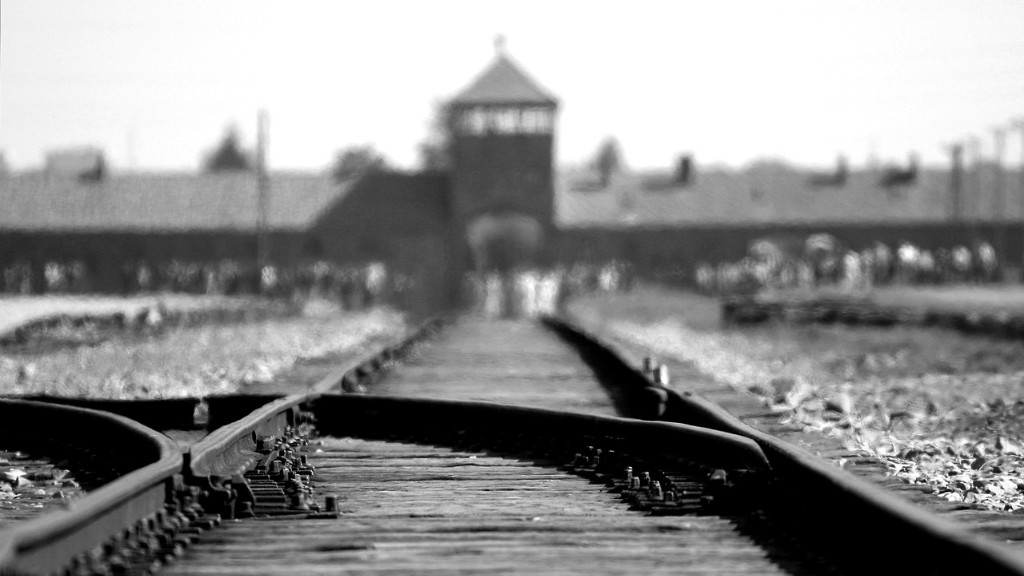Nazi Germany Invades Czechoslovakia
Nazis forces began their first military occupation in 1938, when Adolf Hitler annexed Austria. The annexation of Austria was considered to be part of the Nazis strategy to create a new German Empire, as Hitler had proclaimed the German state he was building was “Greater Germany”. This event was called the Anschluss, and it led to the incorporation of Austria into the Nazi German state.
The next move of the Nazis was the annexation of Czechoslovakia, which they occupied in March 1939. The Nazis had allies in Czechoslovakia, the Sudeten Germans, whose leaders were sympathetic to Hitler. Nazis took advantage of the tenuous political situation in the country, and forced the Czech government to cede the Sudetenland to Germany. Nazi Germany then forcefully occupied the rest of the country, with the help of its allies, Slovakia and Hungary. This occupation was a breach of the Treaty of Versailles, which had limited Germany’s military activities after World War I.
Invasion of Poland and the Outbreak of WWII
The next move of the Nazis was their invasion of Poland. This started a larger conflict, known as the Second World War. Nazis wanted to expand the German Empire, and they considered Poland as a strategic target. After months of diplomatic negotiations and the signing of a non-aggression pact with the Soviet Union, the Nazis invaded Poland in September 1939. This invasion started the war.
The attack on Poland was met with a strong response from the international community. The British government declared war on Germany two days after the Poles were invaded, and other countries in the Axis Powers followed suit. This triggered a broader conflict, as other European powers declared war on Germany.
Occupation of Norway and Denmark
The Nazis next move was the occupation of Norway and Denmark in April 1940. Norway was a strategic target, as it could be used to threaten Britain and control the shipping lanes that were crucial for the country’s trade.
The invasion of Norway and Denmark began with an air bombardment, and Nazi forces quickly captured key points of the two countries. Hitler saw this as an opportunity to secure resources and strategic positions in Western Europe. Norway and Denmark were also important for the Nazi’s “Blitzkrieg” (lightning war) strategy, as they could provide the Nazis with a foothold to launch a future invasion of the UK.
Nazi Invasion of the Netherlands and Belgium
In May 1940, the Nazis launched their invasion of the Netherlands and Belgium. The goal was to gain control of the Dutch and Belgian sea ports and airfields, which would be crucial for a future invasion of the UK. The Allies responded with swift resistance. The Dutch and Belgian forces fought off the German attacks, and for a few weeks, held their ground.
However, the Nazi forces were too strong and the Dutch and Belgians were forced to surrender. This was the first major step in Hitler’s plan for the invasion of the UK.
Invasion of France and the Low Countries
In May 1940, Hitler launched what would become known as the Battle of France. This campaign saw the Nazi forces take control of the Netherlands, Belgium and France. Nazi forces used Blitzkrieg tactics, combined with air superiority, to overrun the Allied forces. This was the first time that Germany was able to conquer a major European nation since the Napoleonic Wars.
This proved to be a major victory for Hitler, as it allowed him to take control of the strategically important ports along the Atlantic Coast. This victory also secured the Nazi’s northern flank against any potential British attack.
Nazi Occupation of the Soviet Union
The last major invasion of the Nazis was the invasion of the Soviet Union, which started in June 1941. Hitler had long planned for an invasion of the Soviet Union, as part of his master plan to conquer all of Europe.
The invasion of the Soviet Union, like the invasion of Poland before it, was a major success for the Nazis. The German forces quickly advanced into the Soviet Union, taking city after city. This allowed the Nazis to move closer to their goal of conquering the Soviet Union.
Nazi Occupation of the Balkan States
The Nazis also invaded and occupied several Balkan states in 1941. These states included Greece, Yugoslavia and Bulgaria. The Nazis saw these states as strategic targets, which would allow them to achieve their aim of conquering the Soviet Union.
The occupation of the Balkans was part of the larger Nazi strategy, and allowed them to control the region and create a buffer zone against the Soviet Union. This also allowed them to secure the resources needed to continue their war effort.
Creation of a Protectorate of Bohemia and Moravia
The Nazis also created a protectorate in Czechoslovakia, known as Bohemia and Moravia. This protectorate was created after the invasion of Czechoslovakia in March 1939.
The protectorate was intended to be a Nazi puppet state, and was used as a staging ground for the Nazis to launch their invasion of Poland in September 1939. This proved to be a crucial move for the Nazis, as it allowed them to prepare their forces for the invasion of Poland and launch the beginning of the Second World War.
Adolf Hitler’s Rise to Power
Adolf Hitler rose to power in 1933, when he was appointed Chancellor of Germany. This was the beginning of a new era, as Hitler sought to take control of Germany and create a German Empire.
The Nazi Party, led by Hitler, quickly gained power and began consolidating its control over the country. This allowed the Nazis to begin their policies of racial and ethnic cleansing, and to launch their military campaigns to expand the German Empire and create their vision of a “thousand-year Reich”.
Nazi Policies of Racial Purity
Hitler’s regime sought to create a “racially pure” German nation by expelling or exterminating Jews, communists, homosexuals, Roma, Sinti, Slavs and other “undesirables”. This was done through a combination of policies, which included imprisonment, forced labor and extermination.
These policies led to the deaths of millions of people from these targeted groups, by either extermination or by creating a harsh living environment that made it impossible for them to survive. This further cemented Hitler’s control over Germany and allowed him to pursue his vision of a German Empire.
German Invasion of the Soviet Union and Other Nations
The Nazis used their power to launch a campaign of conquest that started with the invasion of Poland in 1939. This was followed by the invasions of the Netherlands, Belgium, France, Norway and Denmark and other countries.
The last invasion of the Nazis was the invasion of the Soviet Union, which started in 1941. This was a major military campaign, which was part of Hitler’s ambition to conquer Europe and create a German Empire.
The campaign was a major success, as the Nazi forces quickly advanced into the Soviet Union, taking control of city after city. However, the German forces eventually reached their limits and were eventually pushed back by the Soviet forces.
The Allied Victory and Hitler’s Defeat
Despite the initial success of the Nazi’s campaign, the Allies eventually managed to turn the tide against them. After a long and hard fought campaign, the Allied forces ultimately managed to defeat the Nazi forces and end the war.
This marks the end of Adolf Hitler’s ambitions of creating a German Empire. The Allies succeeded in liberating Europe from Nazi control and creating the basis of a new international order.
The Legacy of Hitler and Nazi Germany
The legacy of Adolf Hitler and Nazi Germany lives on to this day. The atrocities committed by the Nazis still resonate in history, and the world is still coming to terms with the consequences of Hitler’s ambitions.
The international community has the task of preventing similar atrocities from happening in the future, by learning from the mistakes of the past and standing up for human rights and universal values.
German Reparations after the War
The international community also had the task of rebuilding Europe, which had been destroyed by the Nazi regime. This involved reparations from the Nazis, both in terms of financial payments to the victims of Nazi atrocities and in terms of providing aid to countries who had suffered under the Nazi regime.
This process has been ongoing since the end of the Second World War, and it represents the world’s attempt to atone for the terrible crimes committed by the Nazi regime.
Continued Remembrance of the Holocaust
The legacy of the Holocaust is an enduring one, and it is something that still resonates in the collective memory of the world. The world pledges to never forget the victims of the Holocaust, and to honour their memories and ensure that such atrocities never happen again.
This is done through various acts of commemoration, such as Holocaust Memorial Day, which is observed on January 27 every year. This is an important reminder of the horrors of the Holocaust and a way to remember the millions of victims of Nazi atrocities.



